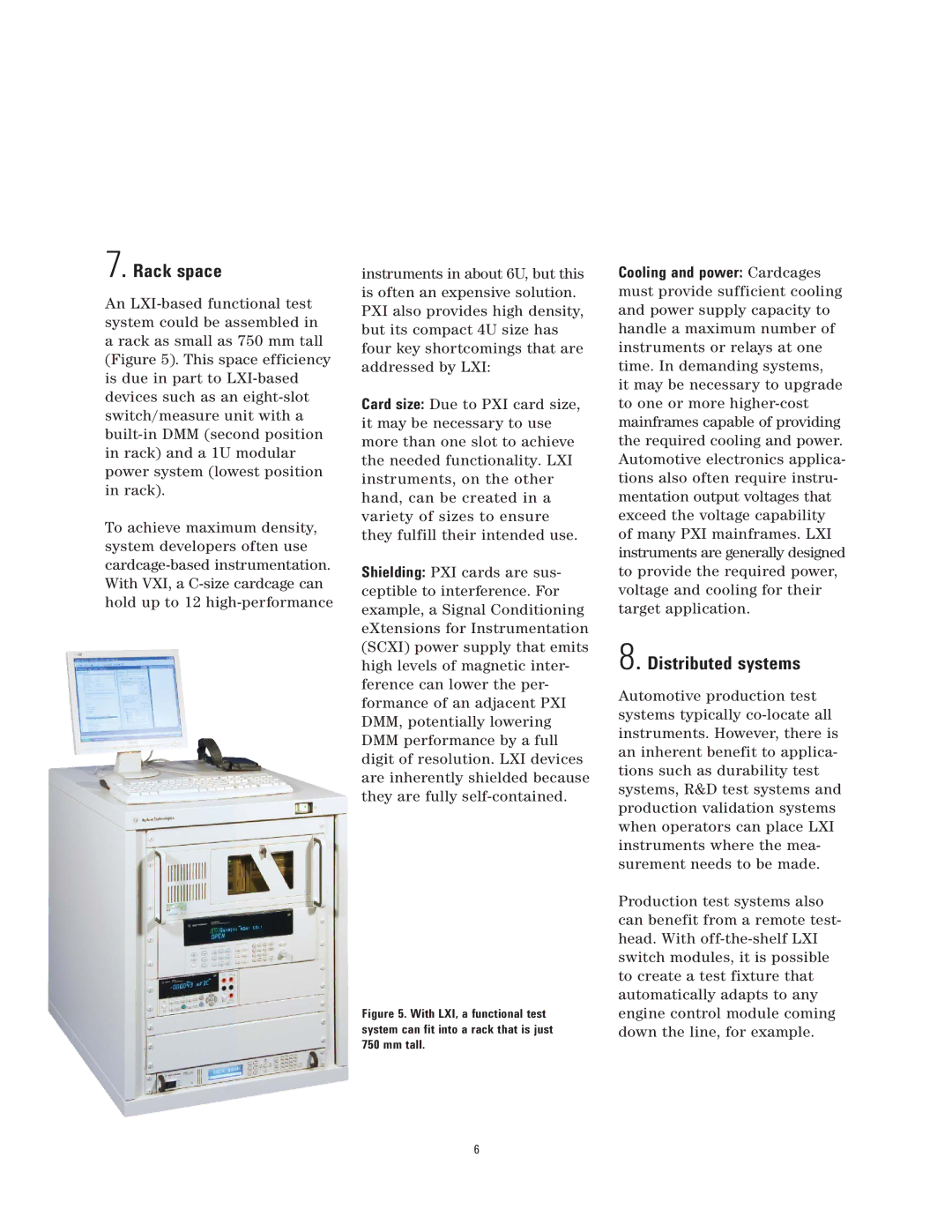
7. Rack space
An
To achieve maximum density, system developers often use
instruments in about 6U, but this is often an expensive solution. PXI also provides high density, but its compact 4U size has four key shortcomings that are addressed by LXI:
Card size: Due to PXI card size, it may be necessary to use more than one slot to achieve the needed functionality. LXI instruments, on the other hand, can be created in a variety of sizes to ensure they fulfill their intended use.
Shielding: PXI cards are sus- ceptible to interference. For example, a Signal Conditioning eXtensions for Instrumentation (SCXI) power supply that emits high levels of magnetic inter- ference can lower the per- formance of an adjacent PXI DMM, potentially lowering DMM performance by a full digit of resolution. LXI devices are inherently shielded because they are fully
Figure 5. With LXI, a functional test system can fit into a rack that is just 750 mm tall.
Cooling and power: Cardcages must provide sufficient cooling and power supply capacity to handle a maximum number of instruments or relays at one time. In demanding systems, it may be necessary to upgrade to one or more
8. Distributed systems
Automotive production test systems typically
Production test systems also can benefit from a remote test- head. With
6
